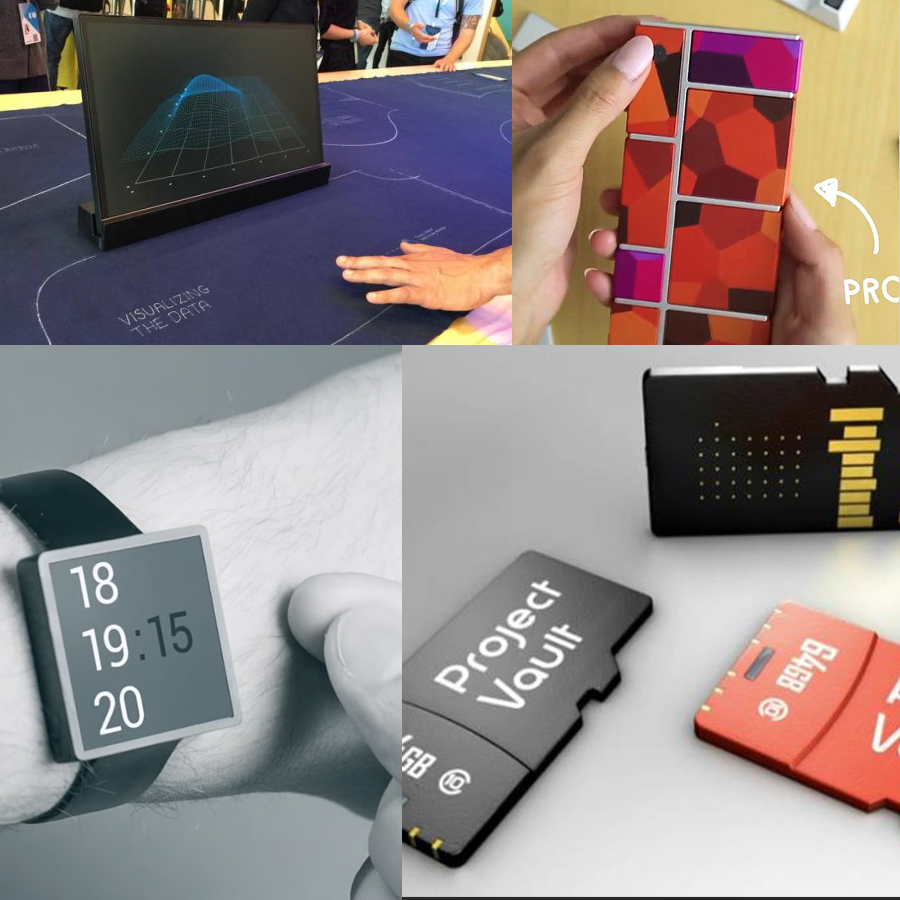Google I/O 2015: Part V – Advanced Technologies and Projects

Prior to Google I/O 2015 Part I, Part II, Part III and Part IV was all about Android M, Updation in existing Products, Developer Tools and about Upcoming New Products. Apart from all Google announcements, ATAP was very unique announcement which undertakes following Projects:
Project Vault
Project Vault aims to secure the sensitive data that is stored on the microSD cards used as external storage media in smartphones. Designed by ATAP, Project Vault incorporates an ARM chip installed inside a microSD card with at least 1 GB of storage space. These cards will be based on RTOS (Real-time Operating Systems). The hardware setup will also consist of an NFC and an antenna for security purposes. The card will feature 2-factor authentication and will act like a regular microSD card to the parent device and would work on a number of operating systems like Android, Windows, OS X, Linux, etc.
Project Soli
Thinking of having a radar right inside wearable like smartwatches, Google ATAP (Advanced Technologies and Projects) team has made it possible. Project Soli wants to create a way for people to operate their devices using only natural hand motions, rather than styluses, touch screens or scroll balls. This highly sensitive radar sensor will be capable of sensing even slightest of the movements and hence will correctly estimate the velocity and the distance. The radar sensors are so precise that the most minuet movement is also recognized. ATAP is using radar to make Soli work even at a distance. It may be available later this year, and will be a feature of Android Wear.
Project Jacquard
Probably the new project debuted by ATAP was Project Jacquard. Project Jacquard incorporates electronics woven right into the fabrics. So, user doesn’t have to rely on wearable devices for doing basic tasks on smartphones. The team has created interactive, touch sensitive threads that can be woven into fabric so user can control their devices from: the sleeve of shirt or pant. They announced a partnership with Levis and are hoping to spread the technology through the fashion industry. The big difference between Jacquard and “smart clothing” of the past is that Google worked with clothing manufacturers to develop a yarn that struck a balance between being conducive for tech, while still being durable and wearable enough for use in the fashion industry.
User can think about controlling music playback just by making a gesture on your garment. The scope of this technologies involving fabric-woven electronics is virtually endless and depends on the imagination of the company and the developers.
Project Ara
Project Ara, one of the most interesting development in Google i/o 2015. The ATAP team demonstrated a working prototype of Google’s modular smartphone. An Ara phone was assembled from scratch, adding everything except the battery module. The phone was then turned on and shown to be working fine. The battery module was then added, without rebooting the device, and no issues come across in accepting the newly added module. The finished product will allow user to swap modules, such as cameras and batteries, in and out of the phone like building blocks.
More About Google i/o 2015
Recent Posts
Deep Learning Explained: Understanding the Brain Behind AI
The Intersection of AI and IoT: Creating Smarter, Connected Environments
The Evolution of AI: From Simple Algorithms to Neural Networks
The Role of AI in Sustainable Development
Scaling New Heights: Integrating Advanced Technologies in Startup Product Engineering